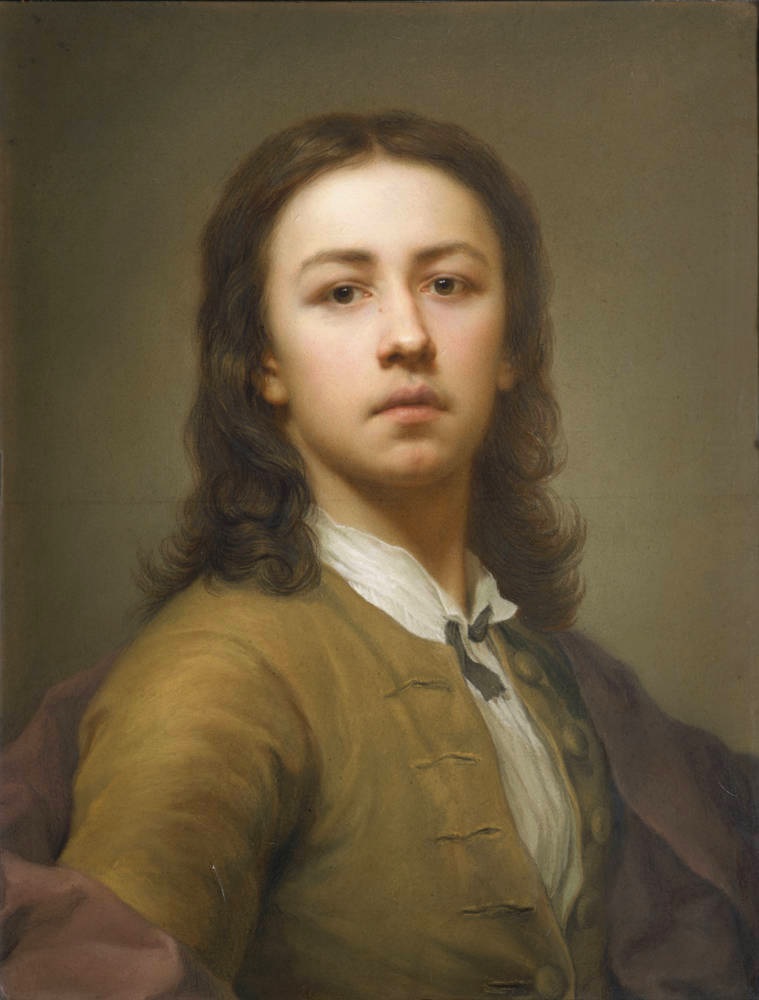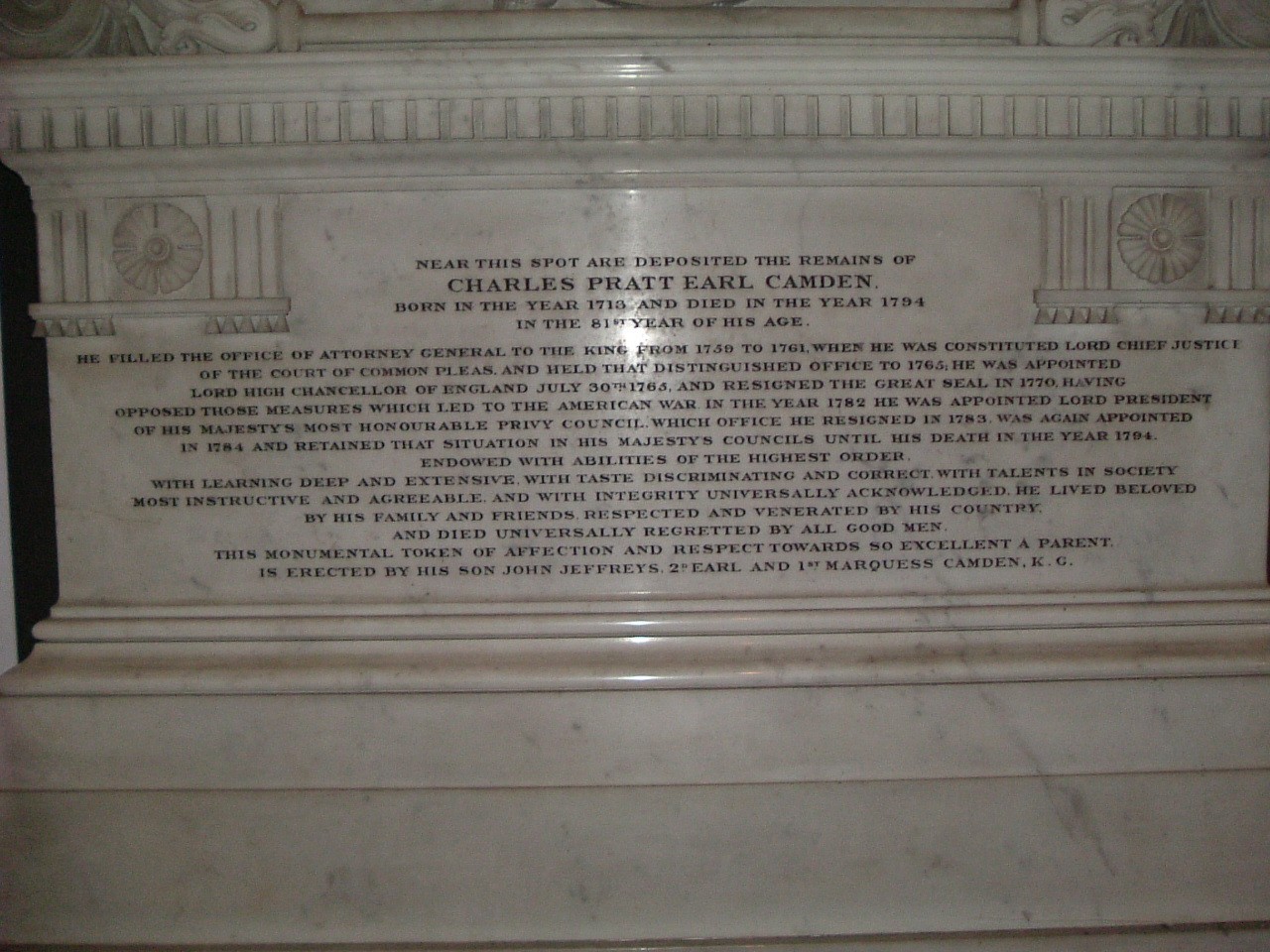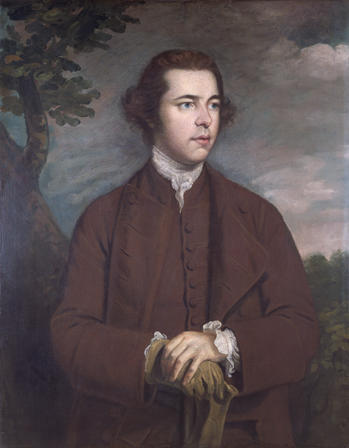|
Richard Wilson (painter)
Richard Wilson (1 August 1714 – 15 May 1782) was an influential Welsh landscape painter, who worked in Britain and Italy. With George Lambert he is recognised as a pioneer in British art of landscape for its own sake and was described in the Welsh Academy Encyclopedia of Wales as the "most distinguished painter Wales has ever produced and the first to appreciate the aesthetic possibilities of his country". In December 1768 Wilson became one of the founder-members of the Royal Academy. A ''catalogue raisonné'' of the artist's work compiled by Paul Spencer-Longhurst is published by the Paul Mellon Centre for Studies in British Art. Life The son of a clergyman, Richard Wilson was born on 1 August 1714, in the village of Penegoes in Montgomeryshire (now Powys). The family was an established one, and Wilson was first cousin to Charles Pratt, 1st Earl Camden. In 1729 he went to London, where he began as a portrait painter, under the apprenticeship of an obscure artist, Thomas ... [...More Info...] [...Related Items...] OR: [Wikipedia] [Google] [Baidu] |
Anton Raphael Mengs
Anton Raphael Mengs (22 March 1728 – 29 June 1779) was a German people, German painter, active in Dresden, Rome, and Madrid, who while painting in the Rococo period of the mid-18th century became one of the precursors to Neoclassicism, Neoclassical painting, which replaced Rococo as the dominant painting style in Europe. Early life Mengs was born in 1728 at Ústí nad Labem (German: Aussig) in the Kingdom of Bohemia, the son of Ismael Mengs, a Denmark, Danish painter who eventually established himself at Dresden, where the court of Electorate of Saxony#Saxony-Poland, Saxonian-Polish electors and kings was. His older sister, Therese Maron, was also a painter, as was his younger sister, Julia Charlotte Mengs, Julia. His and Therese's births in Bohemia were mere coincidence. Their mother was not their father's wife; Ismael carried on a years-long affair with the family's housekeeper, Charlotte Bormann. In an effort to conceal the births of two illegitimate children, Ismael took ... [...More Info...] [...Related Items...] OR: [Wikipedia] [Google] [Baidu] |
Charles Pratt, 1st Earl Camden
Charles Pratt, 1st Earl Camden, PC (baptised 21 March 1714 – 18 April 1794) was an English lawyer, judge and Whig politician who was first to hold the title of Earl Camden. As a lawyer and judge he was a leading proponent of civil liberties, championing the rights of the jury, and limiting the powers of the State in leading cases such as '' Entick v Carrington''. He held the offices of Chief Justice of the Common Pleas, Attorney-General and Lord High Chancellor of Great Britain, and was a confidant of Pitt the Elder, supporting Pitt in the controversies over John Wilkes and American independence. However, he clung to office himself, even when Pitt was out of power, serving in the cabinet for fifteen years and under five different prime ministers. During his life, Pratt played a leading role in opposing perpetual copyright, resolving the regency crisis of 1788 and championing Fox's Libel Bill. He started the development of the settlement that was later to become Camden Tow ... [...More Info...] [...Related Items...] OR: [Wikipedia] [Google] [Baidu] |
John Crome
John Crome (22 December 176822 April 1821), once known as Old Crome to distinguish him from his artist son John Berney Crome, was an English landscape painter of the Romantic era, one of the principal artists and founding members of the Norwich School of painters. He lived in the English city of Norwich for all his life. Most of his works are of Norfolk landscapes. Crome's work is in the collections of public art galleries, including the Tate Gallery and the Royal Academy in London, and the Castle Museum in Norwich. He produced etchings and taught art. Biography John Crome was born on 22 December 1768 in Norwich, and baptised on 25 December at St George's Church, Tombland, Norwich. He was the son of John Crome, a weaver (who is also described as either an innkeeper or a lodger at a Norwich inn), and his wife Elizabeth. After a period working as an errand boy for a doctor (from the age of 12), he was apprenticed to Francis Whisler, a house, coach and sign painter. At abou ... [...More Info...] [...Related Items...] OR: [Wikipedia] [Google] [Baidu] |
John Constable
John Constable (; 11 June 1776 – 31 March 1837) was an English landscape painter in the Romanticism, Romantic tradition. Born in Suffolk, he is known principally for revolutionising the genre of landscape painting with his pictures of Dedham Vale, the area surrounding his home – now known as "Constable Country" – which he invested with an intensity of affection. "I should paint my own places best", he wrote to his friend John Fisher in 1821, "painting is but another word for feeling". Constable's most famous paintings include ''Wivenhoe Park (painting), Wivenhoe Park'' (1816), ''The Vale of Dedham (painting), Dedham Vale'' (1821) and ''The Hay Wain'' (1821). Although his paintings are now among the most popular and valuable in Art of the United Kingdom, British art, he was never financially successful. He became a member of the establishment after he was elected to the Royal Academy of Arts at the age of 52. His work was embraced in France, where he sold more than in his ... [...More Info...] [...Related Items...] OR: [Wikipedia] [Google] [Baidu] |
Thomas Jones (artist)
Thomas Jones (26 September 1742 – 29 April 1803) was a Welsh landscape painter. He was a pupil of Richard Wilson and was best known in his lifetime as a painter of Welsh and Italian landscapes in the style of his master. However, Jones's reputation grew in the 20th century when more unconventional works by him, not originally intended for exhibition, came to light. Most notable among these is a series of views of Naples which he painted from 1782 to 1783. By breaking with the conventions of classical landscape painting in favour of direct observation, they look forward to the work of Camille Corot and the Barbizon School in the 19th century.Chilvers, Ian, ''The Oxford Concise Dictionary of Art and Artists''. Oxford: Oxford University Press, 2003 His autobiography, ''Memoirs of Thomas Jones of Penkerrig'', went unpublished until 1951 but is now recognised as an important source of information on the 18th-century art world.Sumner, Ann, "Who was Thomas Jones? The life, death and ... [...More Info...] [...Related Items...] OR: [Wikipedia] [Google] [Baidu] |
The Destruction Of The Children Of Niobe
''The Destruction of the Children of Niobe'' is a painting by Richard Wilson, created in 1760. It depicts the Greek myth of the murder of Niobe's daughters by the goddess Artemis and her sons by Apollo. The painting won acclaim for Wilson, who obtained many commissions from British landowners seeking classical portrayals of their estates. In 1761, publisher John Boydell hired William Woollett, the foremost engraver in England, to make a print of Wilson's ''Niobe''.Clayton Boydell wanted a spectacular print to demonstrate the capability of English engravers, and he paid Woollett approximately £100 for the Niobe engraving, a staggering amount compared to the usual rates. This single act of patronage raised engravers' fees throughout London.Bruntjen, 20 Wilson's painting of ''Niobe'' is currently in the collection of Ashridge ... [...More Info...] [...Related Items...] OR: [Wikipedia] [Google] [Baidu] |
John Ruskin
John Ruskin (8 February 1819 20 January 1900) was an English writer, philosopher, art critic and polymath of the Victorian era. He wrote on subjects as varied as geology, architecture, myth, ornithology, literature, education, botany and political economy. Ruskin's writing styles and literary forms were equally varied. He wrote essays and treatises, poetry and lectures, travel guides and manuals, letters and even a fairy tale. He also made detailed sketches and paintings of rocks, plants, birds, landscapes, architectural structures and ornamentation. The elaborate style that characterised his earliest writing on art gave way in time to plainer language designed to communicate his ideas more effectively. In all of his writing, he emphasised the connections between nature, art and society. Ruskin was hugely influential in the latter half of the 19th century and up to the First World War. After a period of relative decline, his reputation has steadily improved since the 1960s wi ... [...More Info...] [...Related Items...] OR: [Wikipedia] [Google] [Baidu] |
Claude Lorrain
Claude Lorrain (; born Claude Gellée , called ''le Lorrain'' in French; traditionally just Claude in English; c. 1600 – 23 November 1682) was a French painter, draughtsman and etcher of the Baroque era. He spent most of his life in Italy, and is one of the earliest important artists, apart from his contemporaries in Dutch Golden Age painting, to concentrate on landscape painting. His landscapes are usually turned into the more prestigious genre of history paintings by the addition of a few small figures, typically representing a scene from the Bible or classical mythology. By the end of the 1630s he was established as the leading landscapist in Italy, and enjoyed large fees for his work. His landscapes gradually became larger, but with fewer figures, more carefully painted, and produced at a lower rate.Kitson, 6 He was not generally an innovator in landscape painting, except in introducing the sun and streaming sunlight into many paintings, which had been rare befor ... [...More Info...] [...Related Items...] OR: [Wikipedia] [Google] [Baidu] |
Francesco Zuccarelli
Giacomo Francesco Zuccarelli (commonly known as Francesco Zuccarelli, ; 15 August 1702 – 30 December 1788) RA, was an Italian artist of the late Baroque or Rococo period. He is considered to be the most important landscape painter to have emerged from his adopted city of Venice during the mid-eighteenth century, and his Arcadian views became popular throughout Europe and especially in England where he resided for two extended periods. His patronage extended to the nobility, and he often collaborated with other artists such as Antonio Visentini and Bernardo Bellotto. In 1768, Zuccarelli became a founding member of the Royal Academy of Arts, and upon his final return to Italy, he was elected president of the Venetian Academy. In addition to his rural landscapes which frequently incorporated religious and classical themes, Zuccarelli created devotional pieces and on occasion did portraiture. Beside paintings, his varied output included etchings, drawings, and designs for t ... [...More Info...] [...Related Items...] OR: [Wikipedia] [Google] [Baidu] |
Greene Man
The Greene Man is a public house in London's Euston Road. It was formerly known as the Green Man (and Porters Bar) and before that, the Farthing Pie House or Pye House as mutton pies could be bought there for a farthing. When it was established in the 18th century, the area was rural and so the surroundings were farm fields and pleasure gardens. The place was then frequented by notable artists and writers including William Blake and Richard Wilson. Farthing Pie House There has been a tavern in this location for centuries. It was founded in 1708 as the Farthing Pie House or Pye House. This was a common name for a place where a mutton pie could be bought for a farthing. It was mentioned by Henry Carey in his prelude to his popular song, "Sally in our Alley", which was written around 1716. Carey explained the song's inspiration – a shoemaker's apprentice taking his sweetheart on a tour of London's sights which finished with "proceeding to the Farthing Pye-house, he gav ... [...More Info...] [...Related Items...] OR: [Wikipedia] [Google] [Baidu] |
Farthing Pie House
The Greene Man is a public house in London's Euston Road. It was formerly known as the Green Man (and Porters Bar) and before that, the Farthing Pie House or Pye House as mutton pies could be bought there for a farthing. When it was established in the 18th century, the area was rural and so the surroundings were farm fields and pleasure gardens. The place was then frequented by notable artists and writers including William Blake and Richard Wilson. Farthing Pie House There has been a tavern in this location for centuries. It was founded in 1708 as the Farthing Pie House or Pye House. This was a common name for a place where a mutton pie could be bought for a farthing. It was mentioned by Henry Carey in his prelude to his popular song, "Sally in our Alley", which was written around 1716. Carey explained the song's inspiration – a shoemaker's apprentice taking his sweetheart on a tour of London's sights which finished with "proceeding to the Farthing Pye-house, he gav ... [...More Info...] [...Related Items...] OR: [Wikipedia] [Google] [Baidu] |
Giuseppe Marc'Antonio Baretti
Giuseppe Marc'Antonio Baretti (24 April 1719, Turin, Piedmont – 5 May 1789, London) was an Italian literary critic, poet, writer, translator, linguist and author of two influential language-translation dictionaries. During his years in England he was often known as Joseph Baretti. Baretti's life was marked by controversies, to the point that he had to leave Italy, for England, where he remained for the rest of his life. Biography Baretti was intended by his father for the profession of law, but at the age of sixteen fled from Turin and went to Guastalla, where he was for some time employed in a mercantile house. He devoted himself to the study of literature and criticism, in which he became an expert, though his writings were so controversial that he had to leave Italy. For many years he led a wandering life, supporting himself chiefly by his writings. At length he arrived in London, where he remained for the remainder of his life (when not travelling). He was appointed Secretar ... [...More Info...] [...Related Items...] OR: [Wikipedia] [Google] [Baidu] |







